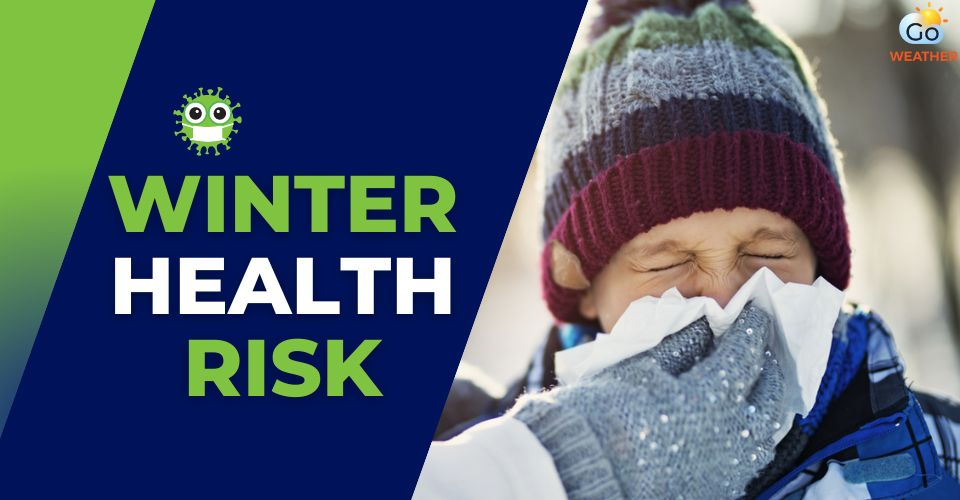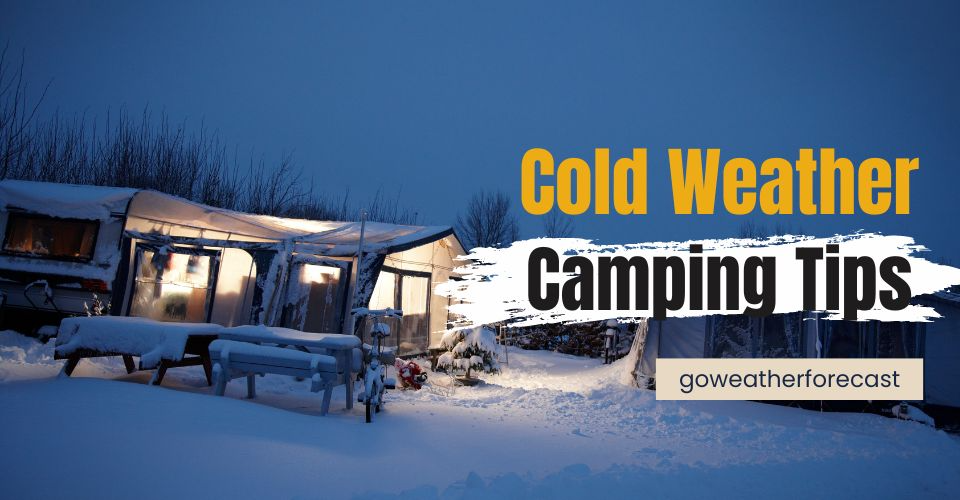Bad Weather Safety Tips to Fight Against Tornado, Lightning & Flood
Knowing bad weather safety tips is essential to saving your life. In fact, millions of people die each year from natural disasters. Just only in the US, this number is hundreds of people dying due to heatwaves, hurricanes, lightning, winter cold, etc. Moreover, thousands of people are damaged by these severe weather events annually. Therefore, to protect yourself from nature's damage, read and take note of these important tips below.
.jpg)
Best safety tips during bad weather
What You Should Do Before Severe Weather Strikes?
First of all, installing a weather forecast app on your phone is beneficial for getting weather news and other important information.
Various weather apps for Android and iOS operating systems can be downloaded easily. Most of them are free and have a user-friendly design, so they are convenient to use.
Moreover, a special feature of installing a weather app you should consider is weather notifications in the early morning each day.
Thanks to that, you can see “what is the weather today” on your notification screen without opening the app. Dangerous warnings are also sent when bad weather conditions occur.
Hence, you can prepare and take a safe place to shelter.
.jpg)
Install a weather forecast app
More than installing the best weather forecast apps is required. They just send you alerts and bad weather safety tips, but you will need to spend time reading them.
It is better to combine using a weather app and listening to commercial radio or television/cable TV for weather information.
These resources will provide you with more useful information that you have not read yet to help you be confident about overcoming bad weather conditions.
.jpg)
Listen to weather forecasts on TV and other media sources
Bad Weather Safety Tips
Tornado Safety Tips
Seek a shelter in buildings
When a tornado comes close to you, let’s seek shelter in a sturdy building, or a pre-designated shelter.
If you are on the higher floor of the building, you should go to the ground floor or the lowest level, preferably in a basement.
Besides, getting under firm things such as a heavy desk or workbench, sitting next to the wall, or lying down is a safe place you can choose when you do not have time to go to a shelter.
Remember to cover your head with your arms or hands to protect it.
.jpg)
Seek a safe shelter
Shelter interior room
If an underground shelter is not available, move to an interior room or hallway with many concrete walls or obstacles between you and the outside of the building, and stay away from windows.
When a tornado comes, with the huge pressure of water, glass windows will collapse and you will be injured or even die. Another good safe place you can find is to get into a bathtub or under a bed or sofa.
Get out of vehicles
One of the most essential severe weather safety tips when having a tornado is getting out of vehicles.
In general, you will think being in a car is safe enough to prevent the damage of natural disasters if you are outside. However, this thought is totally wrong.
Cars can easily be tossed around and do not try to outrun a tornado. Your car will never drive faster than the speed of a tornado.
.jpg)
Get out of vehicles if there is a tornado
Lie down and protect your head
If caught outside, lie flat on the ground and cover your head with your hands. Remember, in tornado situations, glass, and concrete debris are often stuck in roadside ditches or other low spots.
As a result, if heavy rains are pouring in the area, ditches and low spots become flooded areas quickly. Therefore, laying down in a ditch may make you injured and drowning. This is not your best choice.
Avoid the southeast side of the basement
The southwest side of the basement is not necessarily the safest place. In fact, vehicles can be pushed into basements.
Therefore, you can still be crushed no matter where you are in the basement. Even the bricks/stones of a fireplace can crash into the basement and crush you!
.jpg)
Avoid the southeast side of the basement
Take notice of the sign of weather conditions
Remember that the tornado can occur before there is a visible funnel cloud. A tornado is nothing more than a violently rotating column of air extending from the ground to the cloud base.
You may not be able to see the tornado (can’t see the rotating air) until enough debris and dirt get swept into the vortex, and/or the visible funnel cloud develops all the way to the ground.
|
You may also like:
|
Lightning Safety Tips
.jpg)
Safety precautions during bad weather
Postpone outdoor activities
The first extreme weather safety tip is to postpone outdoor activities if thunderstorms are imminent.
Weather apps like Goweather are often developed to have alert notifications. Install it and get a warning when there is lightning outside.
The speed of lightning can reach up to 5-10 miles away from the thunderstorm and strike the ground with a blue sky overhead. The storm does not have to be overhead in order for you to be struck.
Choose a firm shelter
When realizing a sign of lightning, move to a sturdy shelter or vehicle.
Do not hide in a small shed, under isolated trees, or in a convertible-top vehicle. These places are not safe enough or even dangerous for you.
.jpg)
Look for a safe shelter
Moreover, you should stay away from tall objects such as trees, towers, and poles. Lightning can strike tall obstacles and injure you.
Do not touch metal surface
Do not touch metal surfaces when there is lightning outside to avoid shockwaves. If you are in your vehicle when lightning strikes, do not touch a metal surface absolutely. You are safer in a vehicle than being outdoors.
30/30 rule
The 30/30 rule is very important and you should learn by heart. The rule is shown that if the time between lighting and thunder is 30 seconds or less, go to a safe shelter. Stay there until 30 minutes after the last rumble of thunder.
.jpg)
Remember the 30/30 rule
Flash Flood/Flood Safety Tips
Do not try to drive over a flash flood
How to stay safe in bad weather if there is a flash flood? Do not try to drive over it, which is one of the best wet weather driving tips.
Nearly half of all fatalities in a flash flood involve a person driving a vehicle. Hence, do not drive into a flooded area. It can take only 2 feet of water to float away most cars.
.jpg)
Do not try to drive over the flash flood
Do not walk through a flooded area
One of the most crucial safety tips for severe weather is not to walk through a flooded area. It can be a shallow area that you think you can go through easily, but the reality is totally different.
Just 6 inches of fast-moving water can sweep a person off their feet. It is very threatening, so do not walk through it or go through it with the help of another specific role person.
Move to a higher area to shelter
.jpg)
Move to a higher area to shelter
Move to higher ground as much as possible to avoid floods. If you are camping in a river valley, you should move to higher ground quickly if thunderstorms with heavy rains are in the area.
Do not attempt to drive away because it will be very dangerous.
Don’t use electrical devices in flooded areas
Plug out as well as do not use any electrical tools in flooded areas.
This bad weather safety tip is important, and you need to do it first if your house is flooded. There may be an open wire, and electricity can transfer from that open wire, causing a shockwave.
.jpg)
Don’t use electrical devices in flooded areas
Prepare torch
At any time, at any bad weather you should prepare at least a torch in your home.
Most flash flood deaths happen in the middle of the night. It is dark outside, and it is more difficult to see rising water levels judging from the depth of water covering road surfaces.
Torch will make it easier to move and raise the possibility of survival.
Conclusion
To stay safe during severe weather, installing iOS or Android weather apps is crucial to get weather alerts. Natural disasters can suddenly damage humans; thus, you must learn how to protect yourself. Besides, take note of the aforementioned bad weather safety tips to save your life and your relatives. Read more useful tips at the news of Weather Forecast.











0 Comments
Leave a Comment
Your email address will not be published. Required fields are marked *